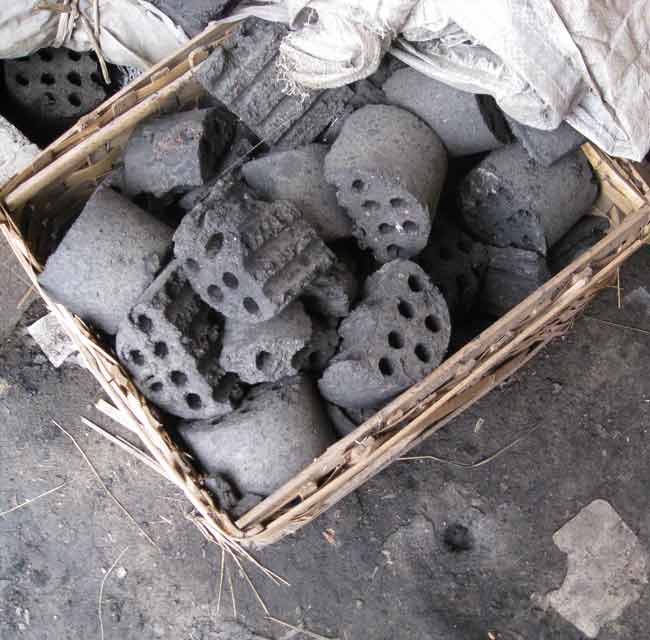How Clean Coal Could Power the Future

Editor's Note: Each Wednesday LiveScience examines the viability of emerging energy technologies — the power of the future. As the U.S. election season draws to a close, one of the biggest environmental issues has been "clean coal." Both candidates for president have come out in support of it. Some environmentalists say it is an oxymoron, while others feel it is a viable option for using abundant coal reserves wisely. The debate is complicated by the fact that clean coal is not well-defined. "It's an abused term that people use to justify whatever they are doing," said John Thompson, director of the Clean Air Task Force's Coal Transition Project. For some, clean coal means reducing the pollutants that cause smog and acid rain, but for others this is not enough: They say coal remains dirty as long as it continues to release the greenhouse gas carbon dioxide into the atmosphere. "I am an environmentalist, and the reality is that coal is killing the planet as we are using it," Thompson told LiveScience. The big caveat Coal can, at least in theory, be burned with little or no carbon footprint, but it requires something called carbon capture and storage (CCS), in which CO2 is separated from the coal (either before or after burning) and buried underground. The trouble is that CCS has never been tried on a commercial scale, and some environmentalists think that it is only being talked about to provide cover for continued coal use. "'Clean coal' is the industry’s attempt to 'clean up' its dirty image – the industry’s greenwash buzzword," reads a Greenpeace Web site. Barack Obama has said that he would develop five first-of-their-kind coal-fired plants with CCS technology. John McCain has pledged $2 billion annually on clean coal technologies. "Whoever wins on Tuesday, we'll wake up on Wednesday and still be getting 50 percent of our electricity from coal," Thompson said. Politicians must find ways to meet constantly growing energy demands. With coal being the cheapest option, the black ore seems indispensable to further economic growth. Levels of dirtiness "Compared to the soaring price of oil and natural gas, coal might seem cheap," reads a brochure from the Natural Resources Defense Council. "But appearances are deceiving: The true costs of conventional coal extraction and use are significant." Sometimes called the dirtiest fuel, coal burning releases particulate matter associated with respiratory problems, sulfur dioxide (SO2) tied to acid rain and nitrogen oxides that contribute to smog. One can clearly see the effects of these pollutants by looking at China, which burns twice as much coal as any other country. Air pollution from Chinese coal burning not only causes health problems in China (as highlighted by the Beijing Olympics), but some of this material ends up floating all the way to the United States. However, coal can be burned in a cleaner way. In the United States and other countries, new power plants are required to implement pollution-reduction technologies. In some plants, for instance, the coal is pre-washed to remove impurities, and the smokestacks are equipped with "scrubbers" that filter out SO2 and particulate matter from the flue gas. Still, none of these technologies address carbon dioxide. Coal emits more CO2 than any other common fuel: 80 percent more than natural gas and 35 percent more than gasoline, for a given energy output. Two NASA scientists recently released a report that claimed coal is the biggest threat to the climate. "We found that because coal is much more plentiful than oil or gas, reducing coal emissions is absolutely essential to avoid dangerous climate change," said Pushker Kharecha in a press release. Although estimates vary, the amount of coal still underground equals roughly 250 years at current consumption rates. "It's not a question in my mind of whether we will burn it," Thompson said. "The only question is whether we will burn it with CCS or not." Is CCS feasible? The U.S. government had plans to build a $1.8 billion CCS demonstration plant in Illinois called FutureGen, but the Department of Energy cut its funding earlier this year, blaming cost overruns. Coal opponents say this is evidence that CCS is too expensive and too risky. Thompson disagrees. Carbon dioxide is already being separated from coal in gasification plants that make fertilizer or synthetic natural gas (syngas). The separated CO2 is currently released into the atmosphere, but pipelines could be built to divert the gas to saline aquifers where it could be stored. Ironically, China has one of the most developed gasification industries. "They are poised to be the leaders in CCS technology," Thompson said. As far as the costs, the United Nation's Intergovernmental Panel on Climate Change released a report in 2005 that said CCS can lower by 30 percent or more the cost of carbon reduction policies. Still, many environmentalists refuse to concede the need for continued coal use, believing that truly clean energy technologies, such as wind and solar, should be the focus. "Some say a dollar for coal is a dollar taken away from renewables, but I think that is shortsighted," Thompson said. "I'm not willing to bet the planet on coal going away anytime soon."
- Top 10 Emerging Environmental Technologies
- What's Your Environmental Footprint?
- Study: Burying Greenhouse Gas Could Work
Get the world’s most fascinating discoveries delivered straight to your inbox.
 Live Science Plus
Live Science Plus






